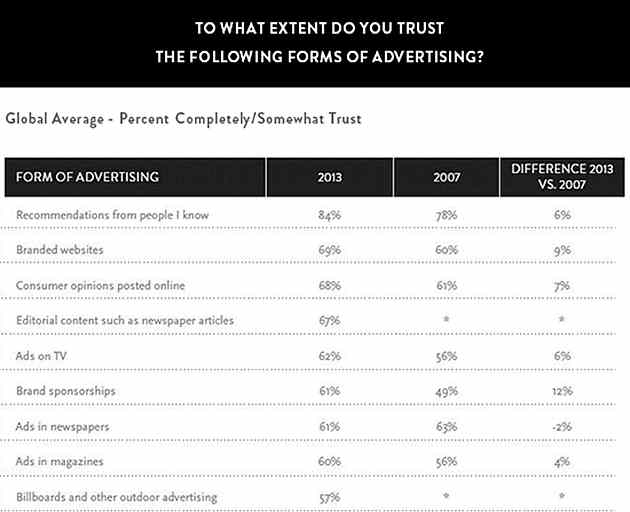Slack, a business messaging and search app, has been a big hit: Within 18 months of its launch it had a valuation of $1.1 billion and 500,000 monthly active users.
Makes you want a piece of that, right?
Well, there is a strategy that Slack used to achieve such high-flyng success: The Slack team made customer feedback the "epicenter of its efforts."
The Power of Feedback
Whether you've already crossed your first $100,000 in monthly recurring revenue (MRR) or you're just starting out, customer feedback can serve directly as a tool for customer acquisition and, indirectly, as a tool to boost other customer acquisition channels.
Its value extends much farther than just verification of your business hypothesis—all the way to positive online reviews and personal recommendations, which are two important influencers of purchasing decisions.
In fact, consumer opinions are the third most trusted form of advertising, according to a Nielsen study:

If an astonishing 68% of consumers base their trust, and consequently, their purchasing decisions on online reviews, it's an asset you should be capitalizing on.
1. Personal Outreach
Receiving quality feedback can be as simple as going to where your customers are and offering your product for free—sort of a "take it for a quick spin" offer. Doing so allows you to ease your potential customers into a mindset of gratification with zero effort.
Places to try:
- Trade conferences
- Industry events
- Online communities
- Coffee shops
- Gatherings of friends or family
2. A Landing Page
Verifying your product or service hypothesis is crucial in the early stages, whether it's just an idea or a ready product. This is where landing pages come in. With current technology, you would be able to do A/B testing as much as you like, receiving insights on the go and re-adjusting your product based on the results, for as little as $49/month. Think of landing pages as a font of product ideas.
3. Encourage Feedback
To motivate your customers to share their thoughts about your product, give then reasons for providing their feedback. Remember, don't compel them—or buy their feedback, ever!
Here's what I would recommend:
- Just ask, like TripAdvisor does. Can't argue with a website with over 200 million reviews and opinions.
- Interact with your audience. Make your audience feel engaged, answer any and all questions, make it easy and comfortable for them to share everything with you, good or bad.
- Post already-gathered reviews on your website, serving as both social proof and encouragement to others to share.
4. Make Giving Feedback Easy
As my colleague Aurelie Chazal recently put it: "Don't you just wish you could catch your website visitors before they leave your website, look them in the eyes and ask them 'WHY? Why won't you buy my product?'"
For better or for worse, there is no direct and ethical way of doing exactly that. However, there are ways to make getting feedback easier:
1. Live Chat
Being able to gather live feedback can be merely a matter of reaching out to your website visitors with a chat invite. And when you're offline, you can set up the necessary triggers and simply add a pop-up asking they leave you a message.
Originally used for customer service, live chat offers a strong "hidden" feature for gathering feedback.
2. Surveys
Whether conducted in person, by email, or right on your website, surveys remain the most effective tool for receiving feedback—quality feedback, at that, as a survey allows you to ask the important questions. Using multiple-choice rather than only open-ended questions will help you increase the response rate.
3. A Separate Page for Reviews
Because reviews hold such significance for both you and your customers, creating a dedicated page for reviews should be a priority. Make it your humble Hall of Fame... and customers will flock to it.
4. Integrating Social Media
Offer multiple platforms for providing opinion and feedback. Adding social media to the mix can be a good idea, since it can make feedback as easy as posting a comment on your Facebook page or writing a 140-character tweet. You can even go one step further and create dedicated social media profiles for offering customer service and receiving the feedback you require.
5. Personalized Cold Emails
If you're as eloquent as Dmitry Dragilev of CriminallyProlific, you can even write a personalized cold email, applicable to most of your customers, with little to no tweaking. Although, remember, you're not selling, so stick to the topic of asking for an opinion.




